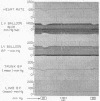Abstract
To study the possible reflex effects of stimulation of pulmonary stretch receptors on the cardiovascular system, experiments were designed that would allow separate assessment of the responses of the heart, the total peripheral vascular resistance, and the resistance of the innervated hindlimb that was perfused at a constant flow rate. In every experiment, inflation of the lungs to a positive pressure of 20 mm Hg produced significant negative inotropic and chronotropic effects. Heart rate fell an average of 22.3±3.8% (SEM) (P < 0.01), pressure recorded from within an isovolumic balloon in animals on total cardiopulmonary bypass fell an average of 14.3±4.6% (P < 0.05), dp/dt recorded from within the balloon declined an average of 31.4 ± 6.0% (P < 0.01), and contractile force measured with a Walton-Brodie strain gauge arch fell an average of 18.6 ±2.2% (P < 0.01). Similarly, a depressor response to inflation of the lungs was noted in the periphery as manifested by an average decrease in total peripheral vascular resistance of 21.9±2.5% in the animals on total cardiopulmonary bypass (P < 0.01), and by an average decrease in perfusion pressure in the isolated hindlimb of 26.0 ±3.8% (P < 0.01). After bilateral cervical vagotomy, the cardiovascular responses to inflation of the lungs were either abolished or markedly lessened. Thus, sudden expansion of the lungs activates the afferent arm of a depressor reflex, which produces negative inotropic and chronotropic responses, in addition to arterial vasodilation. The receptors are sensitive to stretch and the afferent pathway runs predominantly in the vagus nerves.
Full text
PDF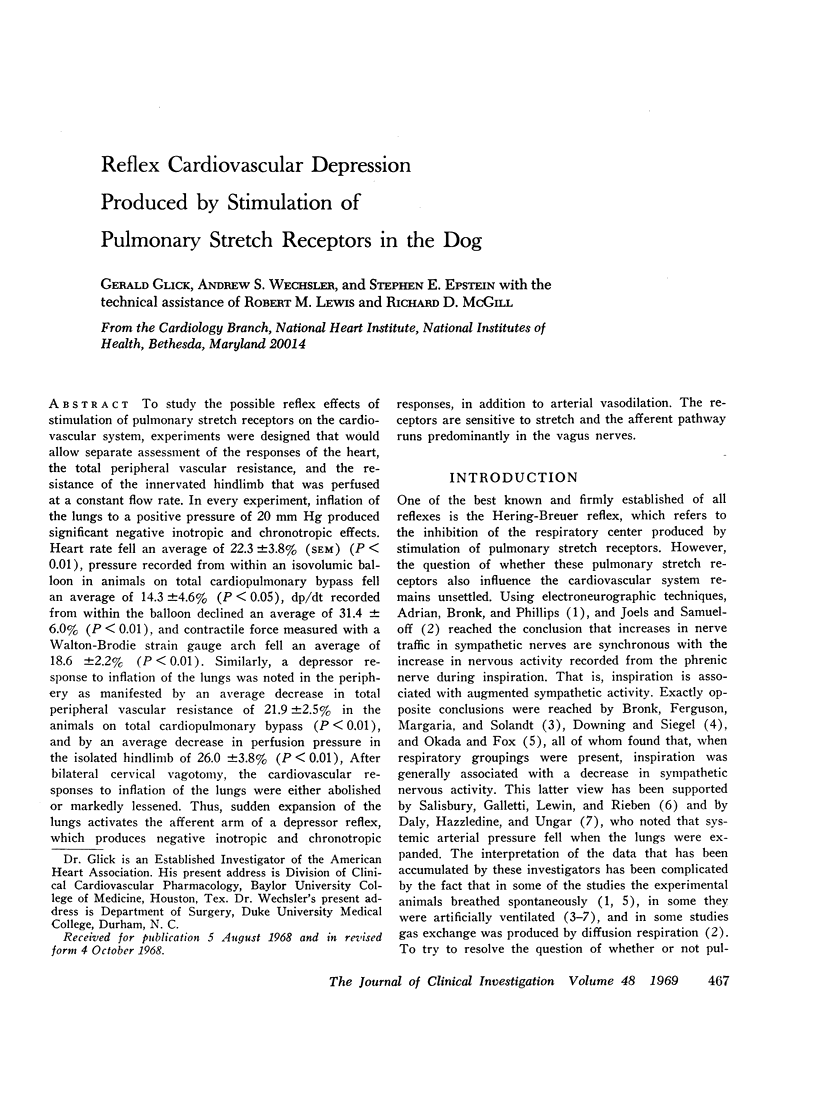
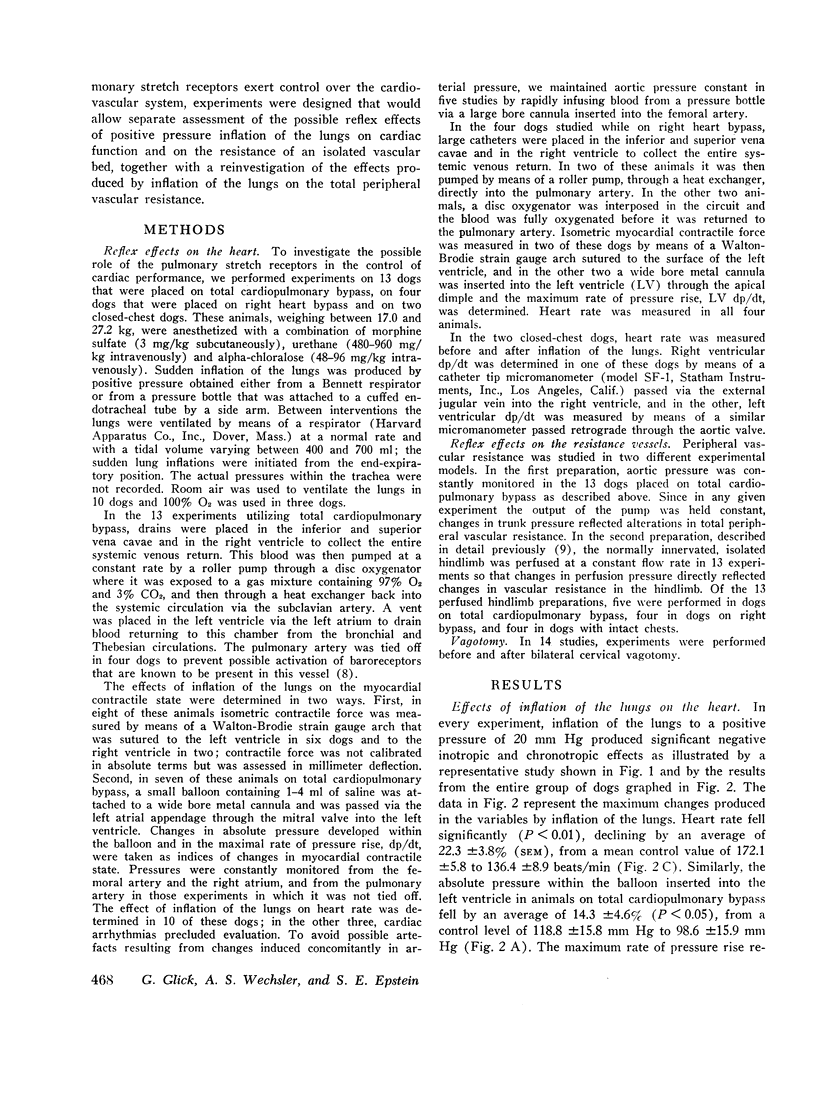
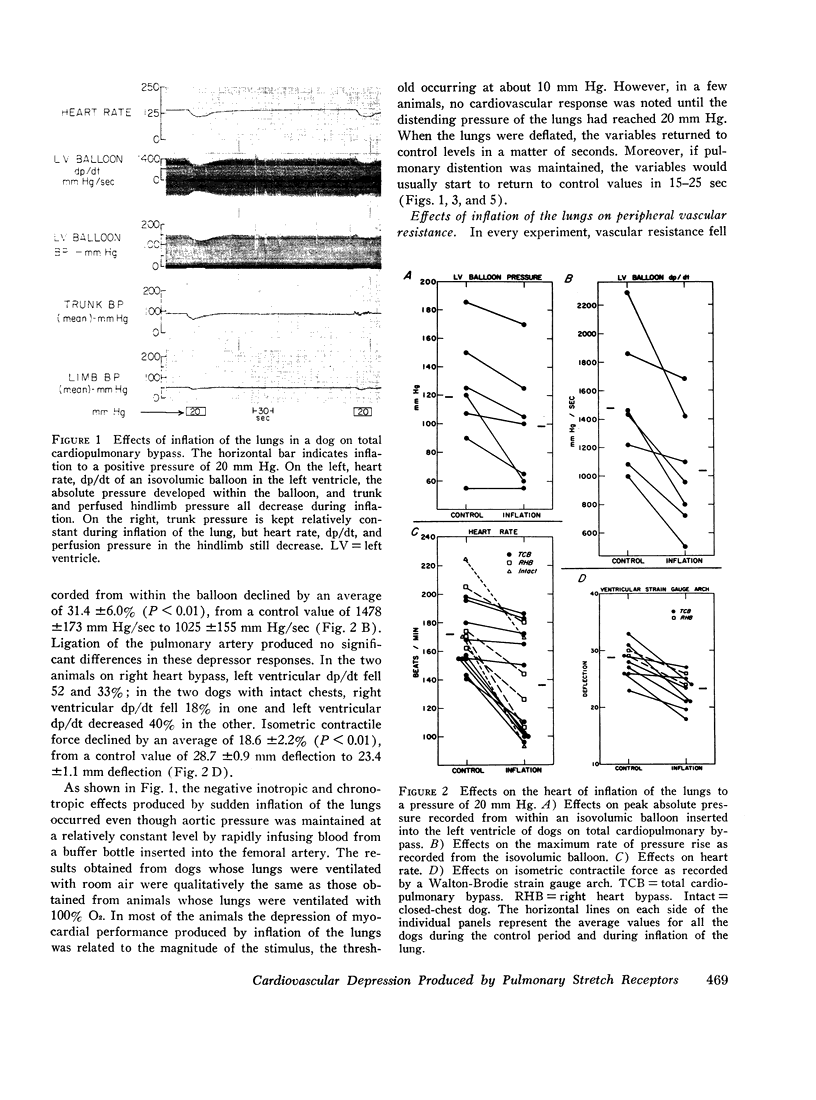
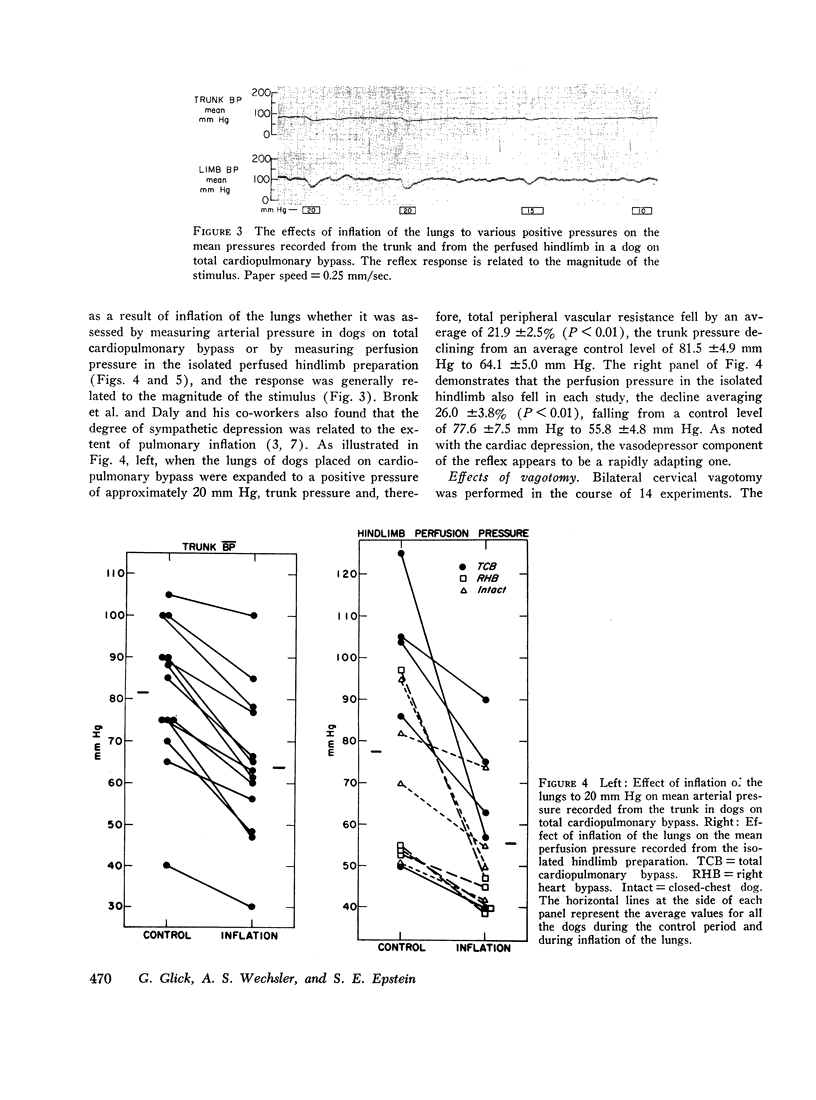
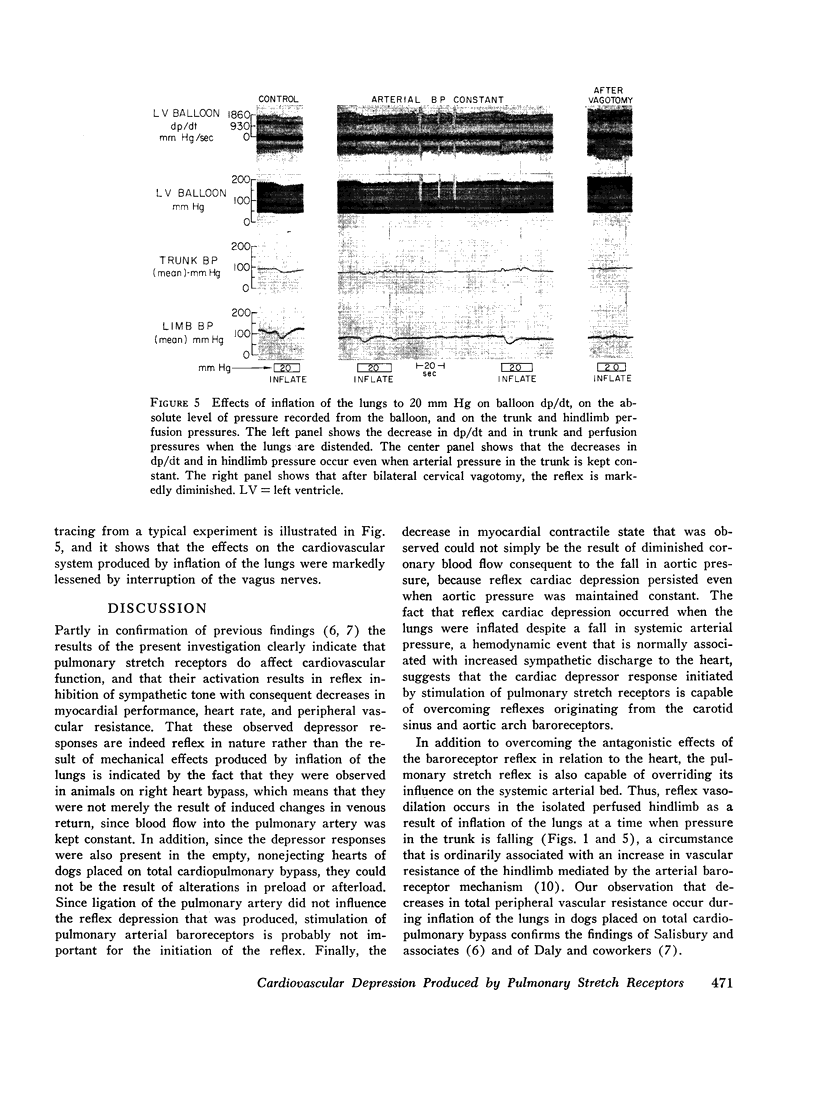
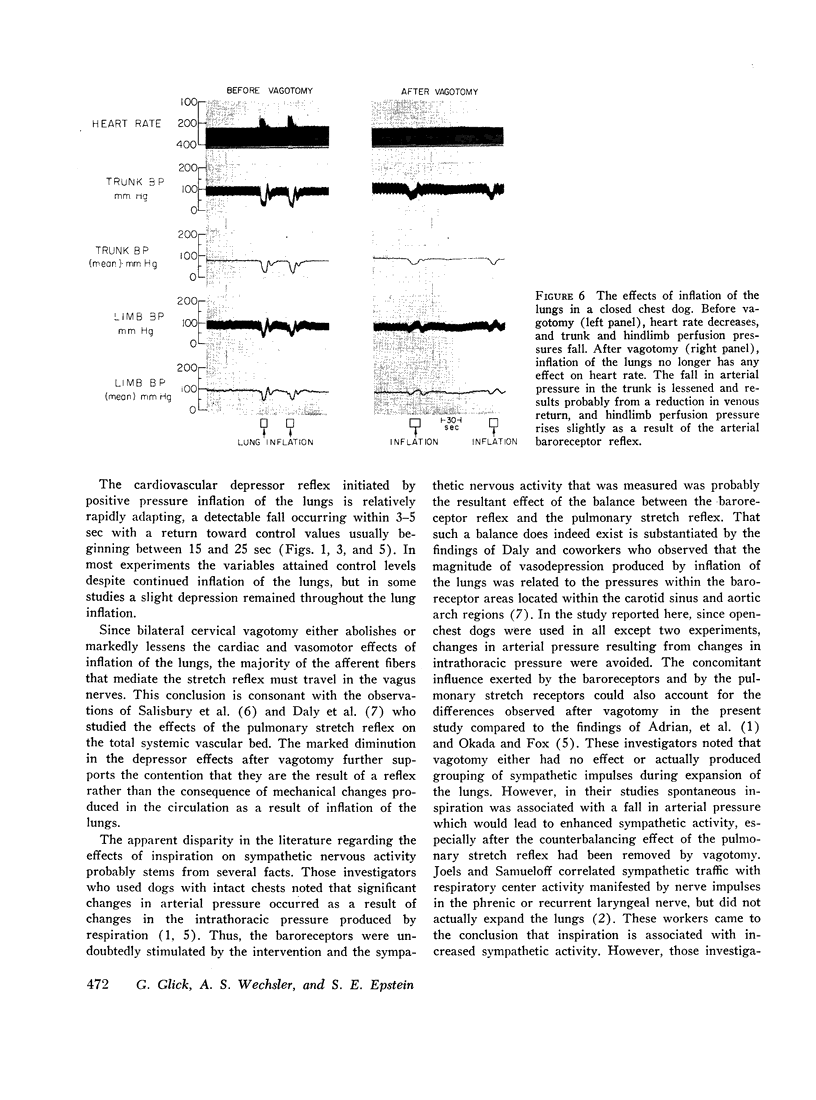
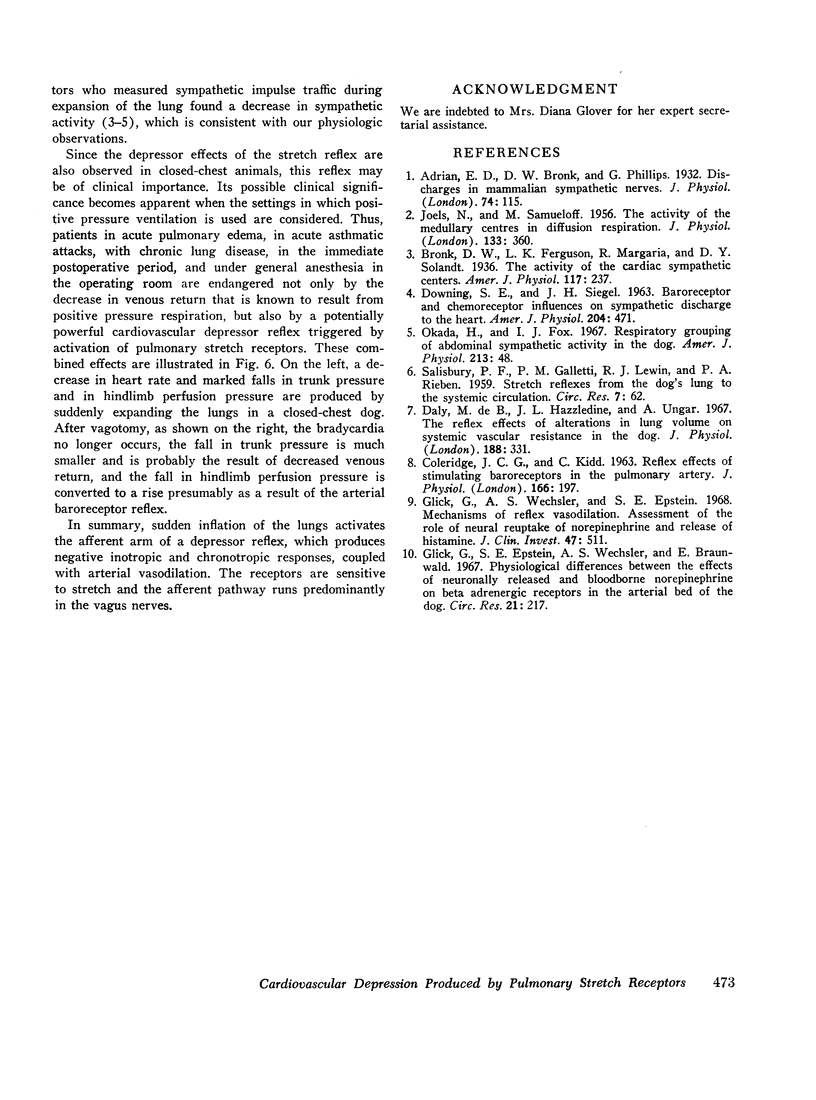
Images in this article
Selected References
These references are in PubMed. This may not be the complete list of references from this article.
- Adrian E. D., Bronk D. W., Phillips G. Discharges in mammalian sympathetic nerves. J Physiol. 1932 Feb 8;74(2):115–133. doi: 10.1113/jphysiol.1932.sp002832. [DOI] [PMC free article] [PubMed] [Google Scholar]
- COLERIDGE J. C., KIDD C. Reflex effects of stimulating baroreceptors in the pulmonary artery. J Physiol. 1963 Apr;166:197–210. doi: 10.1113/jphysiol.1963.sp007100. [DOI] [PMC free article] [PubMed] [Google Scholar]
- De Burgh Daly M., Hazzledine J. L., Ungar A. The reflex effects of alterations in lung volume on systemic vascular resistance in the dog. J Physiol. 1967 Feb;188(3):331–351. doi: 10.1113/jphysiol.1967.sp008142. [DOI] [PMC free article] [PubMed] [Google Scholar]
- Glick G., Epstein S. E., Wechsler A. S., Braunwald E. Physiological differences between the effects of neuronally released and bloodborne norepinephrine on beta adrenergic receptors in the arterial bed of the dog. Circ Res. 1967 Aug;21(2):217–227. doi: 10.1161/01.res.21.2.217. [DOI] [PubMed] [Google Scholar]
- Glick G., Wechsler A. S., Epstein S. E. Mechanisms of reflex vasodilation: assessment of the role of neural reuptake of norepinephrine and release of histamine. J Clin Invest. 1968 Mar;47(3):511–520. doi: 10.1172/JCI105747. [DOI] [PMC free article] [PubMed] [Google Scholar]
- JOELS N., SAMUELOFF M. The activity of the medullary centres in diffusion respiration. J Physiol. 1956 Aug 28;133(2):360–372. doi: 10.1113/jphysiol.1956.sp005592. [DOI] [PMC free article] [PubMed] [Google Scholar]
- Okada H., Fox I. J. Respiratory grouping of abdominal sympathetic activity in the dog. Am J Physiol. 1967 Jul;213(1):48–56. doi: 10.1152/ajplegacy.1967.213.1.48. [DOI] [PubMed] [Google Scholar]
- SALISBURY P. F., GALLETTI P. M., LEWIN R. J., RIEBEN P. A. Stretch reflexes from the dog's lung to the systemic circulation. Circ Res. 1959 Jan;7(1):62–67. doi: 10.1161/01.res.7.1.62. [DOI] [PubMed] [Google Scholar]



